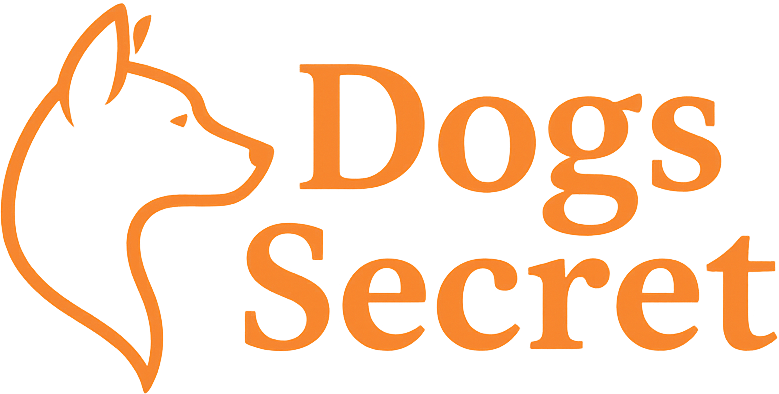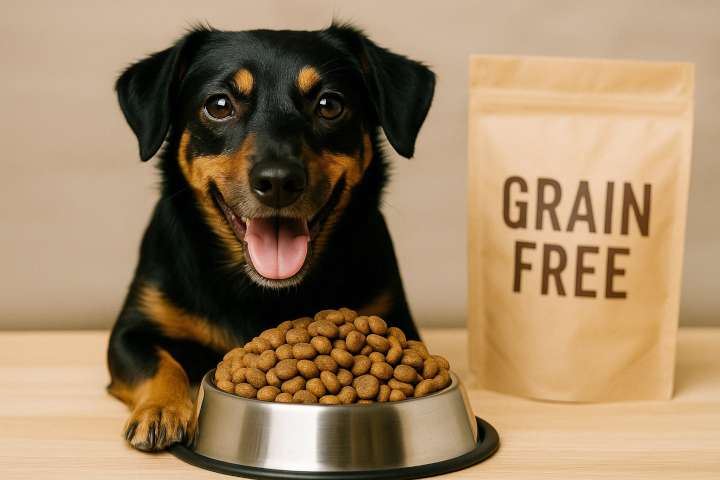Grain-free dog food has become one of the biggest trends in pet nutrition—marketed as more “natural,” easier to digest, and even safer for dogs with allergies. But is it really better for your dog, or just a marketing myth?
In this guide, we’ll explore the truth about grain-free dog food, the science behind it, when it may help (or hurt), and how to choose the right diet for your pet’s unique needs.
What Does “Grain-Free” Really Mean?
Grain-free dog food eliminates common cereal grains like:
- Wheat
- Corn
- Rice
- Barley
- Oats
- Rye
Instead, these formulas typically use alternative carbs such as:
- Peas
- Lentils
- Chickpeas
- Potatoes
- Sweet potatoes
- Tapioca
These substitutes can make grain-free foods look more “natural,” but they still serve the same purpose: providing energy via carbohydrates.
Why Some Owners Choose Grain-Free
- Suspected grain allergies or intolerances
- Belief that grains are unnatural for dogs
- Marketing suggesting it’s “cleaner” or more premium
- Digestive issues or skin problems thought to be grain-related
- Preference for limited-ingredient or low-carb diets
But the truth is, grains aren’t inherently bad for most dogs.
Are Grains Bad for Dogs?
No, not for the vast majority of dogs.
- Grains are actually a good source of fiber, energy, vitamins, and minerals
- Whole grains like brown rice, oatmeal, and barley are highly digestible
- True grain allergies are extremely rare in dogs—most food allergies involve animal proteins like beef or chicken
So unless your vet diagnoses a specific intolerance, there’s no scientific reason to avoid grains.
The FDA and Grain-Free Diets: A Warning
In recent years, the U.S. Food & Drug Administration (FDA) began investigating a potential link between grain-free diets and a serious heart condition called canine dilated cardiomyopathy (DCM).
Findings suggested a correlation (not causation) between certain grain-free diets—particularly those high in peas, lentils, and legumes—and increased DCM cases in breeds not genetically prone to it.
⚠️ Veterinarians now caution against grain-free diets unless medically necessary.
When Grain-Free May Be Helpful
Grain-free diets may help if your dog has:
- Veterinary-confirmed grain allergies (rare)
- Severe gluten intolerance or celiac-like symptoms (extremely rare)
- Chronic digestive issues that don’t improve with other dietary changes
- A recommendation from your veterinarian or veterinary nutritionist
Risks of Grain-Free Diets
❌ May increase the risk of heart disease (DCM)
❌ May have imbalanced nutrient profiles if not properly formulated
❌ Can be higher in calories or carbs from starchy substitutes
❌ Some formulas use low-cost fillers like pea protein to boost protein levels artificially
Unless there’s a medical need, the risks may outweigh the benefits.
How to Choose a Safe Dog Food (Grain-Free or Not)
- ✅ Ensure it meets AAFCO standards for complete and balanced nutrition
- ✅ Choose brands that employ veterinary nutritionists
- ✅ Look for transparent ingredient lists
- ✅ Avoid formulas with excessive peas, lentils, and potatoes in the first 5 ingredients
- ✅ If grain-free, pick one with a cardiologist-approved formula (and monitor heart health)
Trusted brands offering both grain-free and grain-inclusive formulas:
- Hill’s Science Diet
- Purina Pro Plan
- Royal Canin
- Farmina
- Eukanuba
Better Alternatives to Trendy Grain-Free Diets
If your dog doesn’t tolerate some grains, consider:
- Limited ingredient diets (with gentle grains like oats or barley)
- Novel protein diets (e.g., duck, salmon, or venison)
- Gently cooked or fresh diets formulated by vets
- Prescription diets for chronic digestive or allergy issues
These can be safer and more effective than going grain-free blindly.
Conclusion
Grain-free doesn’t automatically mean healthier. For most dogs, grains are safe, digestible, and beneficial. In fact, avoiding grains without a medical reason could expose your dog to unnecessary risks, including heart disease.
Always base your feeding decisions on science, not trends, and talk to your vet before switching to a grain-free diet.
Want help comparing labels or understanding ingredients? Visit our Dog Food Evaluation Tool to get expert-backed guidance.

